Introduction: A Pilgrimage to the Art Sanctuary Visited by One Million People
The islands floating in the Seto Inland Sea transform into a stage for contemporary art once every three years. The Setouchi Triennale, now in its sixth edition in 2025, has established itself as one of Japan’s largest art events, attracting one million visitors from both domestic and international locations.
Traveling by boat across calm seas and walking through narrow island alleys, visitors encounter numerous artworks deeply rooted in the Setouchi landscape and the lives of its people. This year features an unprecedented collaboration among eight museums across three prefectures—Kagawa, Okayama, and Hyogo—further enriching the artistic experience.
We thoroughly introduce the charms of the Setouchi Triennale as experienced by musician Miwa Sakamoto and writer-creator Sekaikan Ozaki.

What is the Setouchi Triennale? Basic Information
Origins and Philosophy of the Festival
The Setouchi Triennale launched in 2010, using the islands of the Seto Inland Sea—facing depopulation and aging—as its stage, with the theme “Restoration of the Sea.” More than just an art event, this festival serves as a regional revitalization project, an attempt to rediscover the islands’ history, culture, and people’s lives through art.
Artists from Japan and abroad visit the islands, engage in dialogue with local residents over weeks or months, and create works unique to each location. Former schools, vacant houses, and port warehouses—places bearing traces of past lives—become stages for artworks, creating unique spaces where memory and contemporary art merge.
Features and Highlights of the 2025 Edition
This sixth edition represents the largest-scale event to date. Particularly noteworthy is the first-ever collaboration among eight museums spanning Kagawa, Okayama, and Hyogo prefectures. This adds a new dimension of enjoyment beyond the island art experience, allowing visitors to tour museums across different regions.
The festival is divided into three seasons—spring, summer, and autumn—allowing visitors to enjoy collaborations between art and the Setouchi’s natural beauty as it changes with each season. Since the artworks and events vary by season, many visitors return multiple times.
The Charm of Island-Hopping: An Extraordinary Experience by Boat
The Joy of Ferry Hopping
One of the Setouchi Triennale’s greatest attractions is the “ferry hopping” experience of traveling from island to island by boat. From departure points like Takamatsu Port and Uno Port, the moment you board ferries connecting various islands, the art festival has already begun.
From the deck of boats crossing the calm Seto Inland Sea, you can view the multi-island beauty formed by over 700 islands of various sizes. The time spent in the sea breeze, building anticipation for the next island, offers a luxury impossible to experience in the city. Miwa Sakamoto notes, “The time spent on the boat itself feels like an art experience.”
Unique Character and Art on Each Island
Each island hosting the festival—Naoshima, Teshima, Inujima, Shodoshima—possesses its own distinct personality.
Naoshima is known worldwide as a contemporary art sanctuary, with facilities like the Chichu Art Museum and Benesse House Museum where the architecture itself becomes an artwork. Yayoi Kusama’s “Red Pumpkin” and “Yellow Pumpkin” serve as iconic symbols of the festival.
Teshima is an island where rural landscapes with terraced rice fields harmonize with contemporary art. The Teshima Art Museum’s water droplet-like architecture provides an ultimate spatial experience unified with nature.
Inujima is famous for the Inujima Seirensho Art Museum, which utilizes the ruins of a former copper refinery. The fusion of industrial heritage and art offers new perspectives on history.
Sekaikan Ozaki remarks, “Each island surprises me with how naturally art and life blend together,” describing how the islands themselves become like massive installation pieces.
Treasures Hidden in Narrow Alleys: Chance Encounters with Artworks
The Joy of Walking Through Settlements
The charm of the Setouchi islands extends beyond the artworks themselves. The process of walking through island settlements in search of artworks becomes an irreplaceable experience.
Narrow alleys, stone walls, old houses, Jizo statues, fishing port scenery. The surprise of contemporary art suddenly appearing in spaces where daily life unfolds. By relying on maps and getting lost, you encounter the islands’ true faces not found in tourist guides.
Miwa Sakamoto shares, “The artwork I encountered when I was nearly lost left the strongest impression,” expressing the charm of island-hopping that doesn’t go according to plan. Casual conversations with locals also become unique memories of this festival.
Art That Evokes Place Memory
Many artworks are installed in places where people once lived—abandoned schools, vacant houses, warehouses. Artists create works while respecting the history and memories of these places, allowing the buildings’ inherent stories to resonate with the artworks.
For example, works displayed in elementary school classrooms that once echoed with children’s voices evoke nostalgia for time spent there. Works utilizing houses emptied by aging confront the island’s reality while creating new value.
Setouchi as Depicted by Domestic and International Artists
Site-Specific Artwork Creation
Many artists participating in the Setouchi Triennale visit the islands and stay for weeks to months while creating their works. By learning regional history, engaging in dialogue with residents, and incorporating local materials and techniques, they produce works deeply connected to place.
For international artists, the Setouchi landscape offers fresh surprises. The calm sea, multi-island beauty, old settlement atmosphere, and above all, the warmth of island residents—all serve as sources of inspiration.
Japanese Artists’ Fresh Perspectives
For Japanese artists, too, Setouchi holds special meaning. In rapidly changing modern Japan, the islands preserve “Japan’s disappearing original landscape.” While facing depopulation challenges, the islands’ rich communities and culture offer important insights for considering Japan’s future.
Sekaikan Ozaki notes, “I realized that landscapes I took for granted as a Japanese person are actually quite precious,” emphasizing the cultural value of Setouchi art.
New Initiative: Three-Prefecture, Eight-Museum Collaboration
Birth of a Museum Network
Particularly noteworthy in the 2025 festival is the first collaborative project among eight museums spanning Kagawa, Okayama, and Hyogo prefectures. By adding regional museums as new hubs to a festival previously focused on island art, broader and more multifaceted artistic experiences become possible.
The collaborating museums have each served as regional cultural centers. This project includes common ticket issuance, special exhibitions, and artwork exchanges, establishing a system for rediscovering each museum’s unique character through the festival.
Art Corridor Connecting Islands and Mainland
This collaboration forms what might be called a “Setouchi Art Corridor”—a wide-area network encompassing not just Seto Inland Sea islands but mainland cultural facilities. Combining site-specific artwork experiences on islands with curated exhibitions in museums allows multifaceted art enjoyment.
Miwa Sakamoto states, “Visiting museums helped me understand more deeply the background and context of works seen on the islands,” showing how this collaboration enhances viewing experiences.

Miu Sakamoto & Sekaikan Ozaki on Setouchi
A Musician’s Resonance Between Art and Music
For musician Miu Sakamoto, Setouchi art shares commonalities with music. “The quiet time confronting artworks resembles the sensation of listening to music,” she says.
Particularly impressive were works unified with nature. She was deeply moved that natural sounds—wave sounds, wind sounds, bird songs—function as part of the artworks. She describes it as “an art experience felt with all five senses, impossible in urban white cubes.”
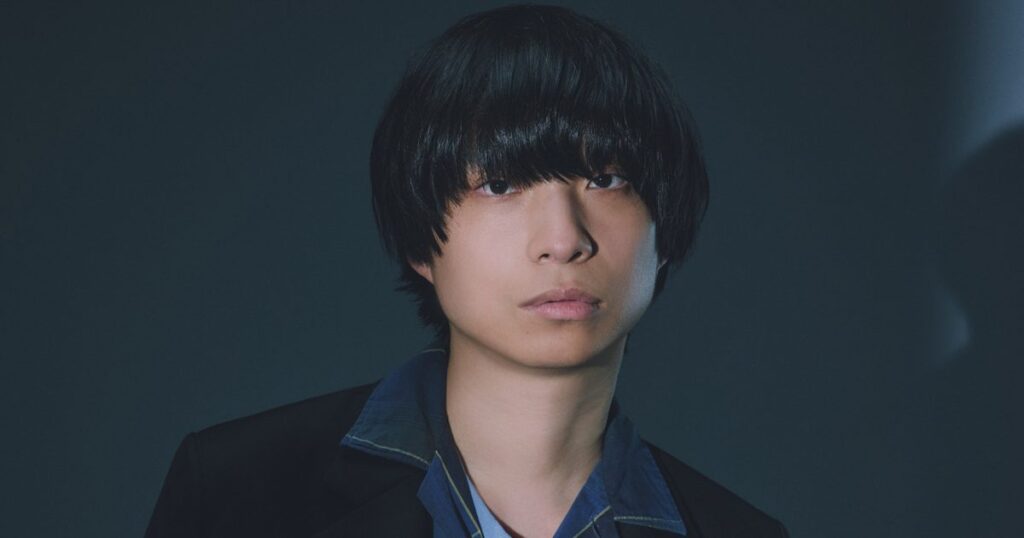
A Writer-Creator’s Perspective on Narrative
Writer and creator Sekaikan Ozaki focuses on the “narrative quality” of Setouchi art. He analyzes, “Each artwork multilayerally weaves the island’s history, people’s lives, and artists’ thoughts.”
He notes that works utilizing old buildings possess unique timelines where memories held by places intersect with new creation, offering the pleasure of deep interpretation like literary works. His words—”viewing artworks is reading the land’s story”—capture the essence of the Setouchi Triennale.
Practical Guide for Visiting
Access and Transportation
Access to the Setouchi Triennale primarily begins at Takamatsu Port (Kagawa Prefecture) or Uno Port (Okayama Prefecture). To reach Takamatsu, fly to Takamatsu Airport or take the shinkansen to Okayama Station and transfer to JR Takamatsu Station. To reach Uno, take the JR Uno Line from Okayama Station for about one hour.
From each port, regular ferries and high-speed boats operate to the islands, with increased service during the festival. To efficiently visit multiple islands, carefully check ferry schedules and plan strategically. However, things not going as planned is also part of island travel’s appeal. We recommend planning with ample time.
Recommended Touring Methods
First-time visitors should start with Naoshima. With relatively good access and many attractions, it’s ideal for grasping the festival atmosphere.
From day two onward, visit smaller islands like Teshima and Inujima. Spending a full day on each allows deep enjoyment of the island atmosphere and dialogue with art.
If you have energy and time, visit Shodoshima as well. Since the island is large, rental cars or bicycles are convenient.
Miwa Sakamoto advises, “Don’t rush; savor one island thoroughly.” Rather than trying to see all artworks, treasure time engaging with works that interest you at your own pace.
Essential Items and Clothing Considerations
Comfortable walking shoes are essential for island-hopping. With many slopes and unpaved roads, choose well-worn sneakers. Don’t forget hats, sunscreen, and drinks. Since islands may have few vending machines, purchasing at ports provides peace of mind.
Weather changes easily, so bring lightweight rain gear. Also, since some artwork viewing requires fees, carrying ample cash is recommended.
Encounters with Local People
Communication Created by Art
One special charm of the Setouchi Triennale is natural interaction with local people. Walking around islands, you encounter locals who call out, “Where are you from?” or “Did you see that artwork?”
Many islanders participate as festival supporters, kindly offering artwork guidance and island history. Time spent at cafes and restaurants enjoying local food while hearing about island life is as valuable as artwork viewing.
Sekaikan Ozaki says, “The islanders’ hospitality makes this festival special,” pointing out the importance of relationships between people and art.
Power Supporting a Sustainable Festival
The festival brings many visitors to the islands, generating economic benefits. But more importantly, art gives islanders pride and hope.
Even amid depopulation, islanders recognizing their islands’ value through the festival and actively participating have increased. Cases of younger generations returning to islands through art and increased migration are reported.
Conclusion: Encountering Art and Life in Setouchi
The Setouchi Triennale is not merely an art event. It’s a grand cultural project connecting sea and islands, history and present, region and world, and people with people.
The reason one million people visit lies not only in high-quality contemporary artworks but in the context where works are placed, the islands’ beautiful nature, and above all, encounters with warm people.
As experienced by Miwa Sakamoto and Sekaikan Ozaki, this festival brings different discoveries and emotions to each visitor. You don’t need art expertise. Board a boat, walk islands, face artworks. Within these simple acts, special time unavailable in daily life awaits.
This year’s first-ever three-prefecture, eight-museum collaboration further expands the festival’s possibilities. The entire Setouchi region is being reborn as a new cultural sphere through art.
The next Setouchi Triennale is three years away. But many island artworks are permanently displayed and can be visited outside festival periods. Once you visit, you’ll surely want to return. That’s Setouchi’s charm.
Why not take a boat to Setouchi, which has become an art sanctuary?

![[商品価格に関しましては、リンクが作成された時点と現時点で情報が変更されている場合がございます。] [商品価格に関しましては、リンクが作成された時点と現時点で情報が変更されている場合がございます。]](https://hbb.afl.rakuten.co.jp/hgb/1087c65e.d261fbdb.1087c65f.3da0bb53/?me_id=1213310&item_id=21553406&pc=https%3A%2F%2Fthumbnail.image.rakuten.co.jp%2F%400_mall%2Fbook%2Fcabinet%2F2213%2F9784568432213_1_5.jpg%3F_ex%3D240x240&s=240x240&t=picttext)


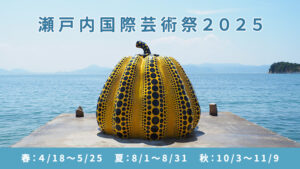



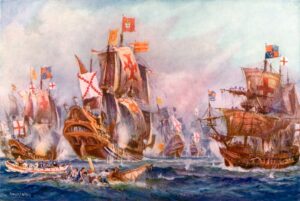

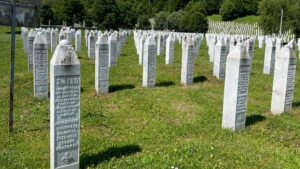
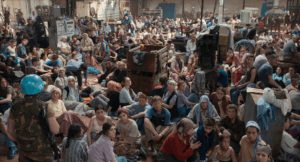
コメント